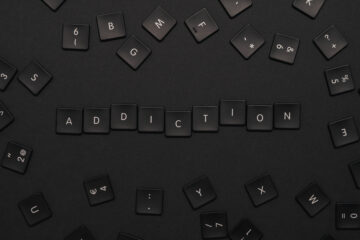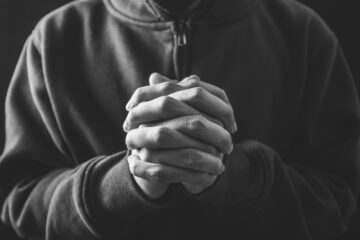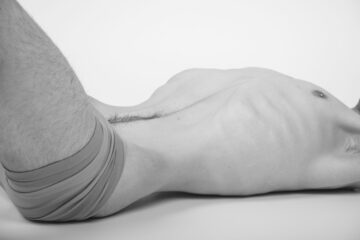Psychedelics May Have Cured My PTSD
Written By Valeria Castaneda
TRIGGER WARNING
I’m not a medical doctor and I’m not licensed to give any medical advice, the following is my personal experience with psychedelics and what I’ve gained from using them. I’ve always been keenly interested in the world of psychotropic drugs but after experiencing a traumatic event that left me with PTSD in 2019, my interest grew as I learned more about neuroscience and I searched for relief from my symptoms. Neuroscience is defined as the study of neurochemistry and experimental psychology, which deal with the structure or function of the nervous system and brain.
I even slept with a machete cradled in my arms at night.
I spent a lot of time trying traditional medicine and psychiatry to help curb the symptoms of my trauma. Any sound I heard would wake me up at night, in the mornings I would startle awake and feel my heart pounding through my chest, the sound of life happening in my home was so overwhelming I couldn’t make it through the day without my noise canceling headphones or a breakdown from being overstimulated would surely ensue. I even slept with a machete cradled in my arms at night. I was constantly anxious and too afraid to be around people so I avoided crowds or going into stores, I couldn’t even drive my car anymore. I felt broken because I wasn’t able to live my life like I had once before and I just wanted to get it back.
Psychedelics can teach us to free ourselves from the confines of our own minds.
I was on the verge of suicide because the pain was so great and nothing I was trying was helping until I happened to stumble upon a book written by Michael Pollan titled, How To Change Your Mind, and I was so desperate for some sort of relief that I found hope in those pages. I was at my wits end, life felt unbearable and I was desperate to try something new. I learned about the neuroplasticity of the brain and how we could forge new connections, new habits, and new thoughts by taking advantage of psychedelics as medicine. In Pollan’s book he discusses the default mode network and explores how the brains of “experienced meditators look much like the brains of people on psilocybin: the practice and medicine both dramatically reduce activity in the default mode network.” Pollan goes on to say that it’s believed that by diminishing this activity in the posterior cingulate cortex (PCC) we can learn to detach from our thoughts, feelings, and desires. He draws a correlation to Buddhism and the belief that attachment is at the root of all forms of mental suffering. With this in mind, we can make sense of how psychedelics can teach us to free ourselves from the confines of our own minds.
This is how I learned that a “bad trip” isn’t necessarily a bad thing.
I started to experiment with varying doses of psilocybin containing mushrooms and LSD in a desperate attempt to heal myself. I had been in therapy since I was a teenager so I used the tools I had learned in conjunction with the medicine. I would sit there and think, or write what I was experiencing. I would start out by meditating and observing the thoughts casually passing through my mind. I would let the dark thoughts consume me until I was able to fight my way through the trauma of reliving that pain again and I found something incredible on the other side of it all. I learned that to go through the trauma and feel it was the only way I could heal. I couldn’t avoid the anguish anymore. I had to face it head on and let the pain resurface to completely break me. From those broken pieces, I rebuilt myself. This is how I learned that a “bad trip” isn’t necessarily a bad thing. Your brain is bringing those thoughts to the surface so you can deal with them. I had many bad trips, but through them, I grew stronger and more resilient. I also felt a profound sense of well-being after these bad trips. I felt like I had gotten so much off my chest similar to confessing your most traumatic moments in therapy. You cry and sob, but at the end of it all, you’re left with a sense of healing and relief.
After a few months of experimenting with micro-dosing and larger doses of psychedelics, I noticed that the symptoms I had struggled with started to fade away. I stopped waking up startled and I started to sleep more soundly. I even stopped taking the medications that were given to me for my PTSD. I noticed that my thoughts weren’t as paranoid and fearful anymore. It seemed like I was getting back to the old me, but something was different. I never did go back to being my old self, instead I transformed into something new. I became a beacon of light and hope, or at least that’s how I felt. I could see the positive in any situation and this is when I realized that I had truly changed my mind. I didn’t have to actively reframe the negative thoughts into positive ones anymore, they started to come naturally without me having to think twice about them.
If people had easy access to these substances I think a lot of good could be done.
At this point, I seldom have any symptoms left of my PTSD. I still get startled easily if someone sneaks up behind me, but everything else I suffered with has left me. I never thought I could recover as much as I have and I want to share what I’ve learned with people who could benefit from it like I have. I’ve broken through the shackles of my illness and I truly believe in the healing power of psychedelics. If people had easy access to these substances I think a lot of good could be done.
We’re finally in an age where we can forget about the misinformation we were fed about psychedelics after the 60’s. The neuroscience behind psychedelics proves that these can be extremely healing for our brains. How else could we achieve the kind of neuroplasticity necessary to effectively change our own thoughts?
THIS ARTICLE IS STRICTLY FROM THE PERSPECTIVE OF THE AUTHOR AND THE QUOTES ARE FROM THE BOOK “HOW TO CHANGE YOUR MIND” BY MICHAEL POLLAN, AVAILABLE HERE










